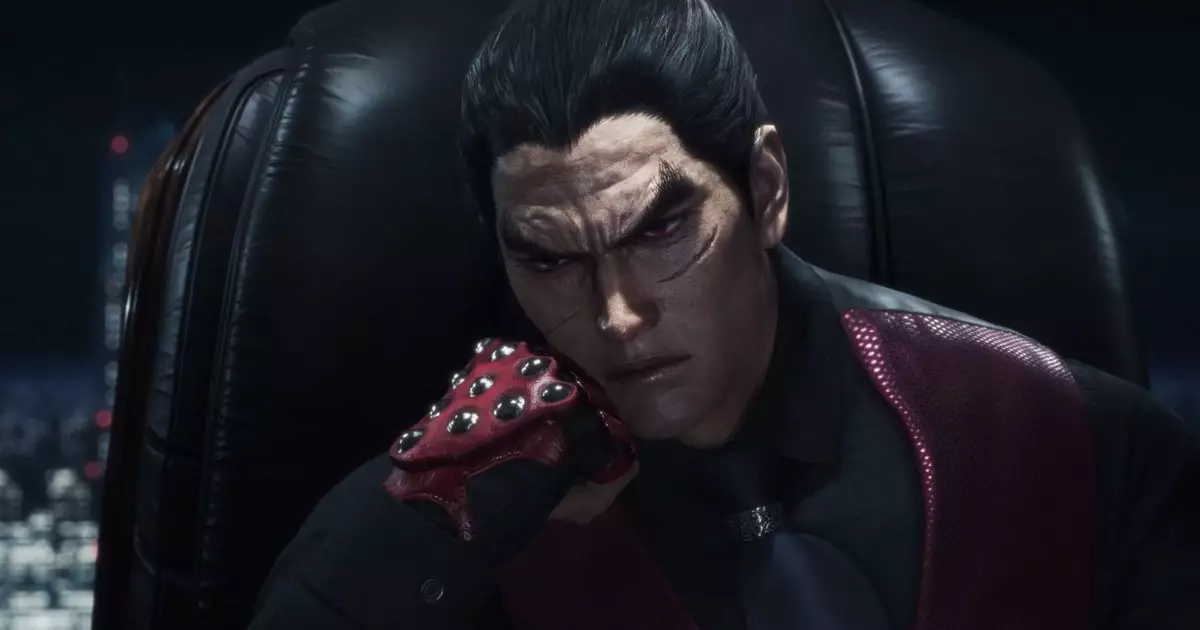When we think of video games, we often focus on the characters, graphics, and engaging storylines that consume our attention for hours. However, an under-discussed aspect of this vibrant industry revolves around the immense pressure faced by developers behind the scenes. Katsuhiro Harada, the visionary behind the legendary Tekken series, recently shed light on the psychological tribulations faced during the creation of Tekken 4. His shared experience serves as both a cautionary tale and an insightful look into the darker corners of creative endeavors that ultimately bring joy to millions.
When Tekken 4 was released in 2001, it did not meet the lofty performance expectations set by its predecessors, leading to a troubling reaction from both fans and the industry alike. Although the game was later celebrated by many, Harada recalls how the initial backlash was a catalyst for his own health crisis, taking him down a spiral of anxiety that manifested physically. His experience of localized hair loss stands as a striking example of how stress can manifest through the body, highlighting the intricate connection between mental and physical health.
Having developed a stress-induced condition where he lost hair only on one side of his body, Harada’s narrative forces a reconsideration of how we perceive stress and its latent effects. Conditions like alopecia areata may seem to be mere cosmetic issues, yet they dramatize the very real physiological consequences of stress. This seemingly physical reaction to mental anguish raises an important point: as creators, how do we safeguard our mental health while meeting the often unrealistic expectations of a competitive industry?
The Weight of Expectations and Criticism
The volatile socio-cultural landscape of gaming is littered with fervent views – both positive and vicious. Harada’s story serves not only as a personal reflection but as a broader commentary on how subjective perceptions can influence a project’s reception. Today, as he fondly reminisces about Tekken 4, he acknowledges a painful truth: “I didn’t have a single ally. Not one.” This sentiment resonates with many creators who have faced a chorus of criticism during their own projects.
Critics can be merciless, especially in an industry driven by community input. From online forums to social media, the cacophony of voices can quickly overwhelm even the most seasoned developers. Harada’s retrospective observation that critics have “forgotten their complaints” is a bittersweet realization. It emphasizes the transient nature of public opinion and raises questions about the true impact of feedback on creative works. Over time, are we too quick to dismiss initial negativity, only to glorify the very things we once scorned?
Creativity thrives in an environment where feedback is constructive, yet our industry seems plagued with adversarial relationships between fans and developers. The challenge lies in fostering a culture where criticism doesn’t morph into personal attacks, focusing instead on discourse that builds rather than breaks.
Lessons from Turmoil: Resilience and Growth
Harada’s journey through stress and eventual recovery offers enlightening lessons about resilience. He took a year-long sabbatical before diving into Tekken 5, a move that illustrates the importance of mental recovery in creative enterprises. The choices we make in moments of high tension can shape our long-term ability to produce quality work and sustain our passion.
Moreover, the ability to look back on one’s work allows for growth. Harada’s insistence that Tekken 4 remains a “constant reminder and lesson” underlines a philosophy that embraces all experiences—good and bad—as integral to personal and professional development. This perspective encourages current and aspiring developers to acknowledge that mistakes and failures are often stepping stones towards achieving great things.
Today, as Harada leads the charge for Tekken 8, his experiences inform both his creative approach and leadership style. His audacious idea to include Colonel Sanders as a character in the game not only showcases his playful creativity but also serves as a reminder of the need to innovate and challenge norms in the gaming space. This risk-taking attitude is essential for an industry that evolves at a relentless pace, where staying stagnant is not an option.
The gaming industry is built on dreams woven by the hands of its creators, and Harada’s candid reflections illuminate the often-overlooked emotional toil accompanying the development process. Understanding these struggles can not only cultivate empathy for creators but also ignite conversations on how the industry can evolve into a more supportive and understanding environment.

